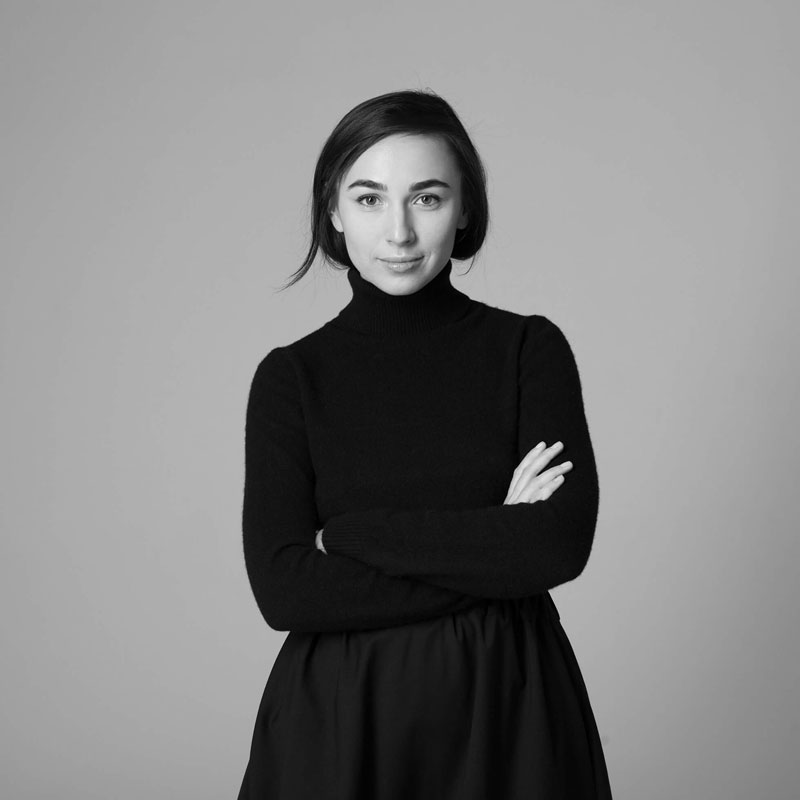Beholding an aesthetic that is as soothing as the mathematical order of a dead language, Paskal is the eponymous brainchild of fashion designer Julie Paskal. Descendant of a family of physicists, her natural affinity for both maths and sciences led to collegiate education in architecture. Blending scientific innovation with creativity for nearly a decade, the designer has utilized laser-cutting as technique to solidify her artisanship. In 2014 Paskal was shortlisted for the LVMH Prize and participated at Pitti W, in Florence, Italy, part of Guest Nation. With the modern woman in mind, a strong yet sensitive design foundation inspires the brand’s combination of delicate, precise, and minimalistic core elements to inform the beauty of each collection. Document spoke with the Ukraine-based designer on her career in steering the internationally in-demand label just after her Autumn/Winter 2017 runway show.
Derrick Gaitér—Tell me about your introduction to fashion design. How did studying architecture prepare you to undertake the alternative design world?
Julie Paskal—I always liked to work with a material: discovering the different properties and changing the form. While studying architecture, I was faced with solid materials and mathematical approaches to the development process. There was not so much creativity nor intimacy. I started to search for softer materials, for sensitivity. I tried to work with fabric and realized that that is much more [suited] to me—I can touch it, I can feel it, I can cover my skin with it. Working with the fabric is much more intimate; fabric can be inspiring and can become the core of the collection. Moreover, fabric allows me to embody my ideas quickly; I can see the results faster and I can change the garment in a couple of hours. I always try to keep the balance. Architecture gave the notion of proportions, shapes, color combinations. It made me a stricter person as I was very airy-fairy before that.
Derrick—If you were to change the core elements or construction of your designs going forward, what would beauty look like to you then?
Julie—Each season my main task is to complicate garments and invent the new elements. The world trends are returned to the deconstruction and realism but beauty is still the manifesto. I pick up new technical materials because I want to move [with the times], however I still keep a conservative approach to my work.
Derrick—Looking over your past three collections a very spiritual quality is present. Is your aim primarily to clothe the body or to satisfy the mind in some way?
Julie—I like to explore nudity. That’s why I use lot of tulle and organza in the collections. I always keep the general function of the clothes—to cover the body—in mind but I always play with this rule. I want my heroine to feel happy and free. I want her to spread love and to be a lover. I want my customer to feel this dreamy vibe—joy and pleasure. So, yes, it is more about satisfying the mind.
Derrick—How did you come to identify your brand’s design principles?
Julie—My main task is always to be sincere with myself during the creative process. I don’t want to satisfy someone’s requirements or expectations. I’m thinking about the customer, but I don’t allow that to dictate the rules. The hardest thing is to keep this balance between creativity and consumer demands. That’s my second principle, to keep that balance. I try to make everything creative and fun. I don’t want this business to be too serious and complex. Nevertheless, I always feel almost on the edge while developing the collection, faced with different surprises.
Derrick—With the next LVMH Prize soon upon us, what wisdom did you acquire having gone through the process?
Julie—The LVMH Prize, without exaggeration, was the turning point in my career. Sarah Andelman discovered Paskal there and after that everything started to grow rapidly. In a general sense, it was the first time I truly realized that fashion is a serious business and that I wanted to move forward. The main thing I learned is that you need to dream but also have a clear strategy for these dreams, you need to tame them. You need to be open for opportunities. You need to ask and have the courage to make your dreams come true, because the biggest dream can be destroyed by reality.














